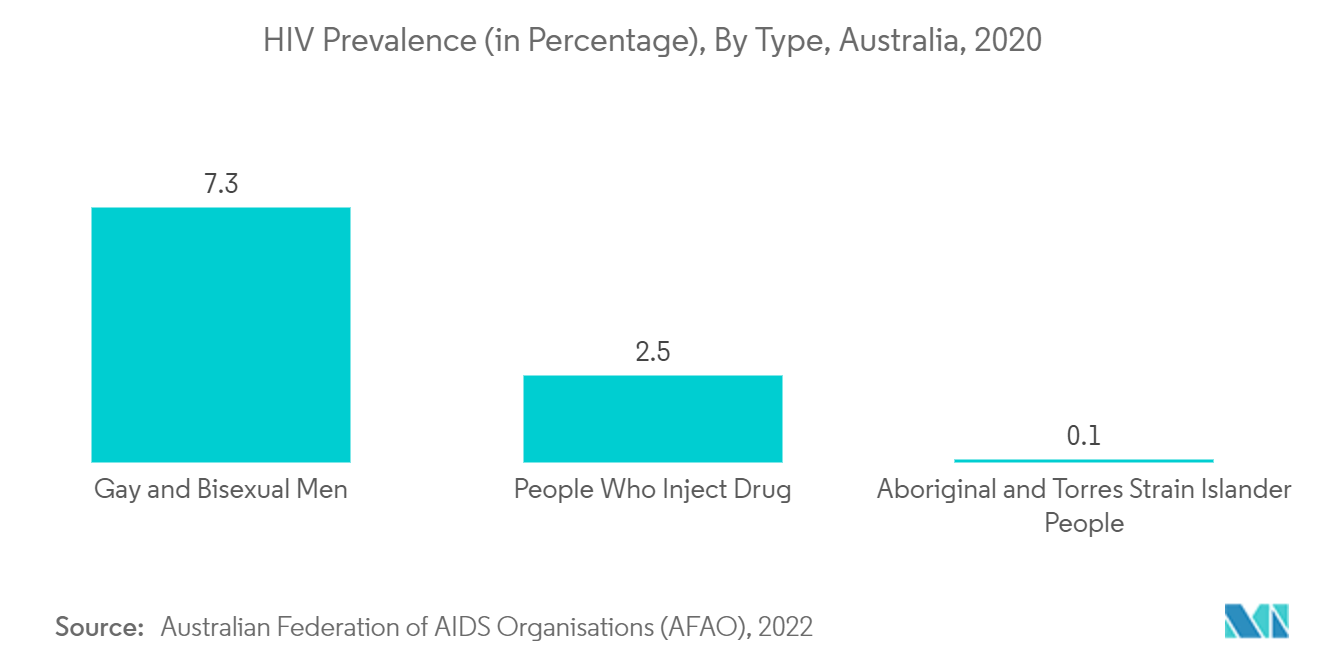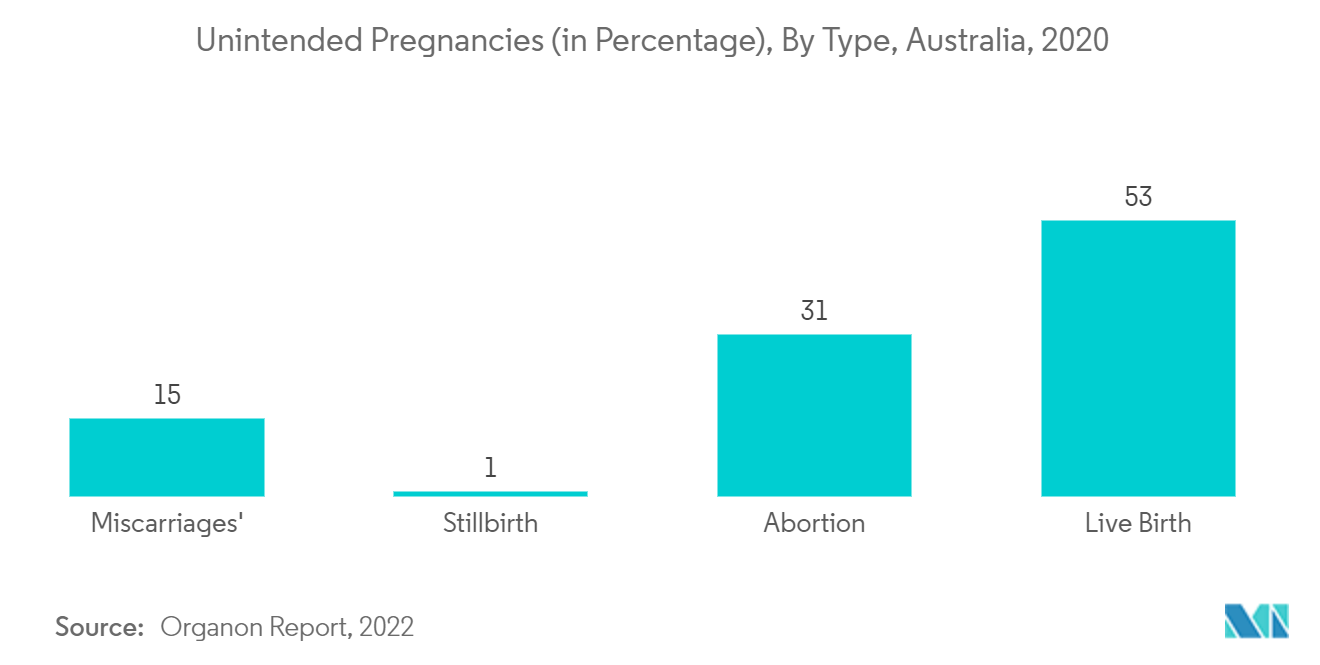Market Trends of Australia Contraceptive Devices Industry
This section covers the major market trends shaping the Australia Contraceptive Devices Market according to our research experts:
Condoms is Expected to Exhibit a Steady Growth During the Forecast Period
A condom is a sheath-shaped barrier device worn during sexual contact to limit the possibility of pregnancy or sexually transmitted infection (STI). There are condoms for men and women. According to November 2020 Updates by WHO the use of condoms significantly reduces the risk of gonorrhea, chlamydia, trichomoniasis, hepatitis B, and HIV/AIDS. They also protect against genital herpes, human papillomavirus (HPV), and syphilis to a lesser extent. With correct use, women whose partners use male condoms have a 2% pregnancy rate yearly. As a result, the increased prevalence of sexually transmitted diseases (STDs) and the significant increase in population are two key factors driving the growth of the contraceptive devices market.
According to the Australian Gonococcal Surveillance Program 2020, there were 29,516 gonococcal infections reported in Australia in 2020, with the National Neisseria Network (NNN) laboratories receiving and testing 7,219 clinical isolates. Antimicrobial susceptibility testing (AST) was performed at NNN laboratories on 24% of gonococcal infections reported. Hence, an increase in the cases of gonorrhea infection in Australia is expected to boost the segment growth.
Additionally, various initiatives taken by market players are likely to support the growth of the market. For example, in September 2021, the Durex condom brand in Australia introduced the traveling electrometer. Such initiatives may create awareness about contraceptive devices and their availability in the country, which is likely to support the growth of the segment during the forecast period.
Thus, all the aforementioned factors are expected to boost segment growth during the forecast period.

Female Segment is Expected to Hold a Significant Market Share Over the Forecast Period
The female segment of the contraceptive devices market is expected to witness significant growth during the forecast period owing to the increased adoption of contraceptive devices, rising sexually transmitted diseases (STI), and a growing number of unintended pregnancies.
According to the study published in the Medical Journal of Australia in July 2022, in metropolitan Perth, Western Australia, infectious syphilis is on the rise, with a more than 18-fold increase from 2015 to 2021. During this period, most cases (229, 74.1%) were nonIndigenous women. This growth has been accompanied by cases in pregnancy and neonates with congenital syphilis. Thus, with the growing prevalence of sexually transmitted diseases in the country, the demand for female contraceptives is expected to increase during the forecast period, thereby driving the growth of the market.
Additionally, as per the report published by Organon in June 2022, nearly half (40%) of all pregnancies are unplanned in Australia, with 197,234 occurrences recorded in 2020. Also, the average cost of an unwanted pregnancy in Australia is USD 36,384. Women in a rural setting are 1.4 times more likely to experience an unintended pregnancy. Thus, with the growing burden of unintended pregnancy in the country, the demand for female contraceptives is expected to increase over the forecast period.
Thus, with all the above-mentioned factors, such as the rising prevalence of STIs and unintended pregnancy, the demand for female contraceptives is expected to increase during the forecast period, thereby driving the growth of the segment.


